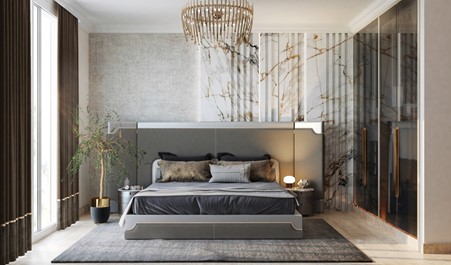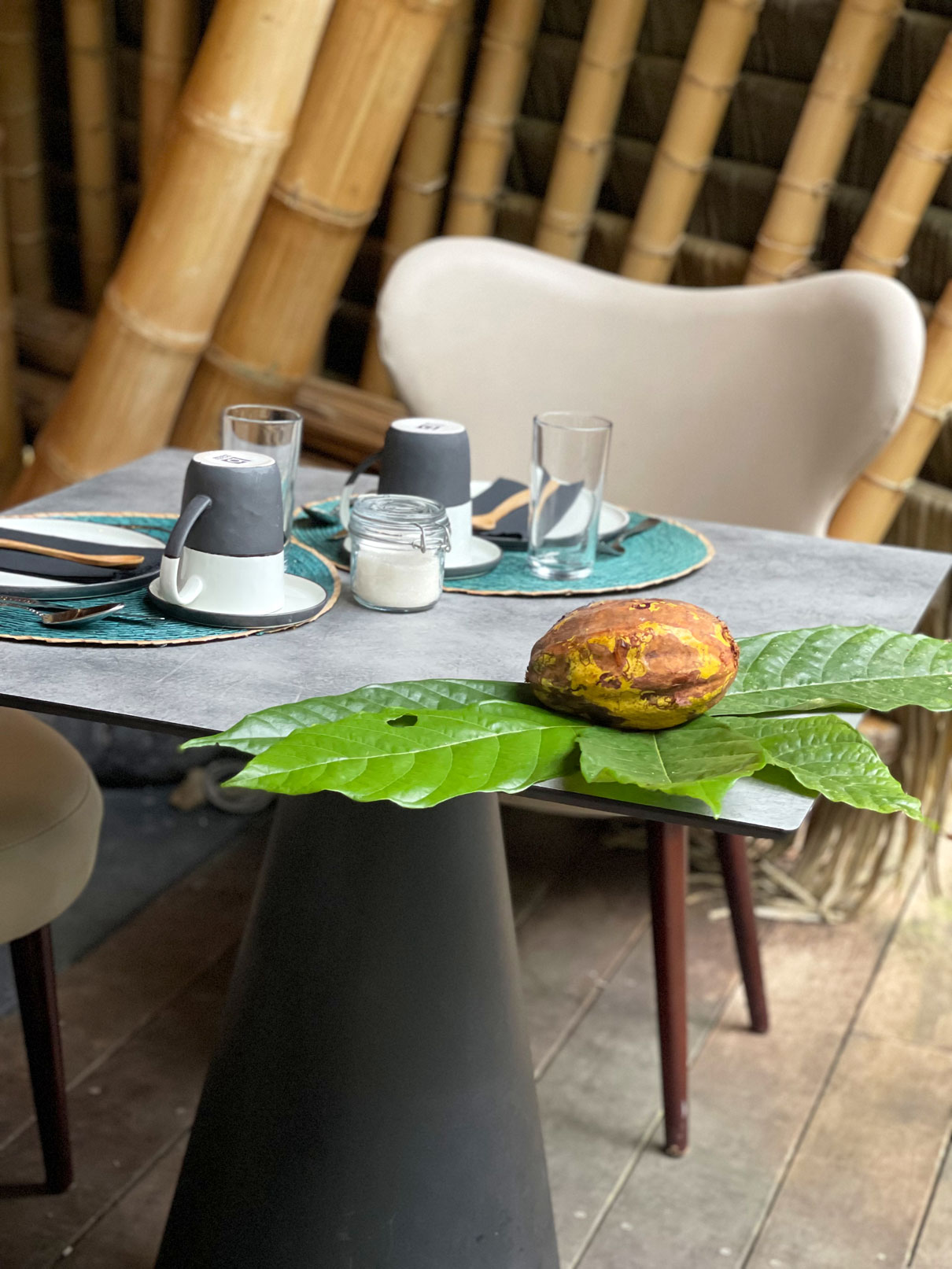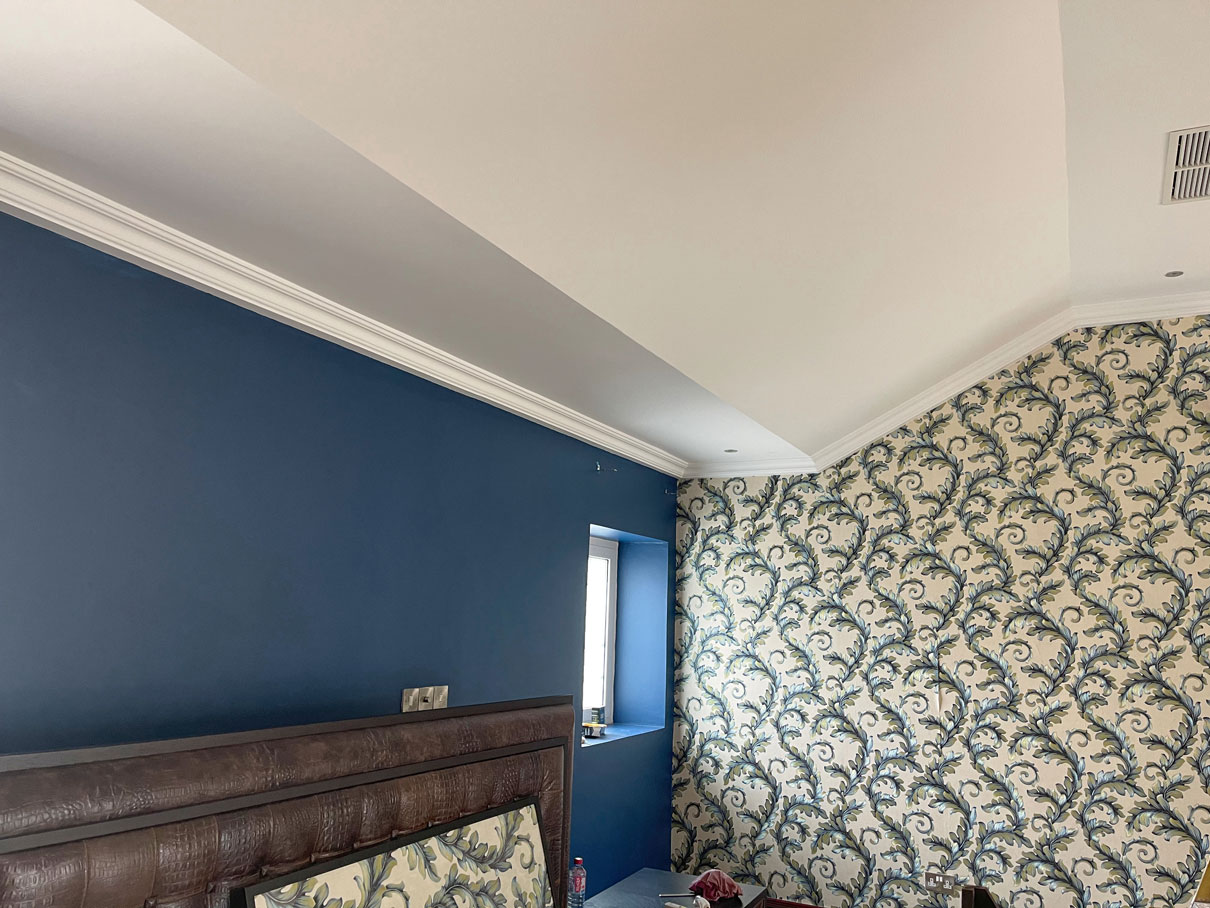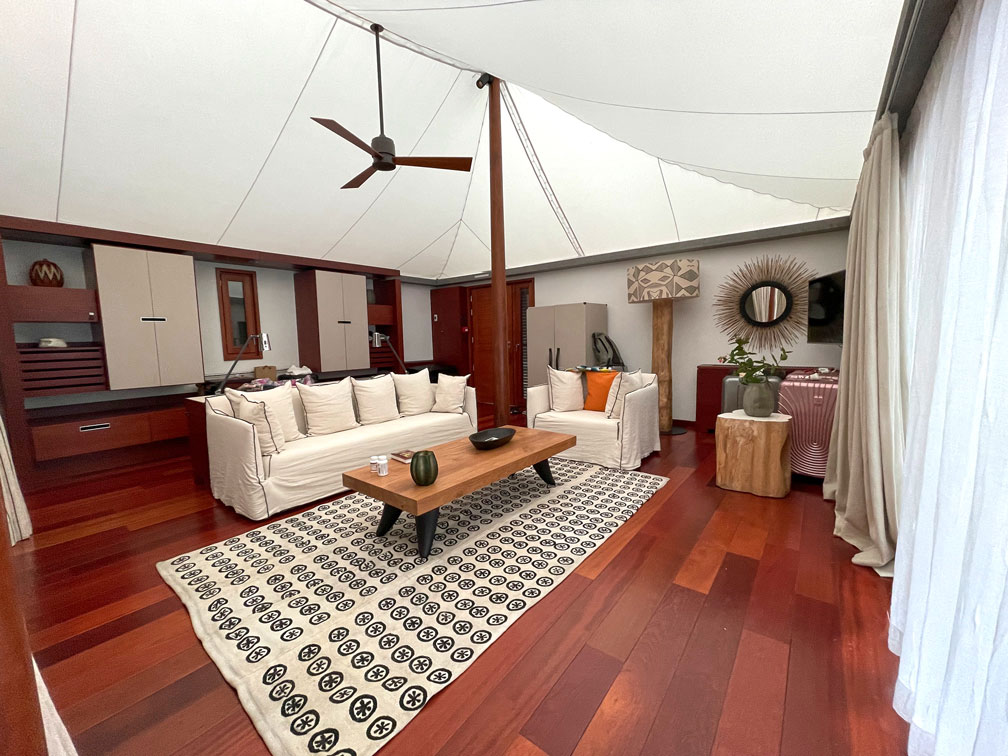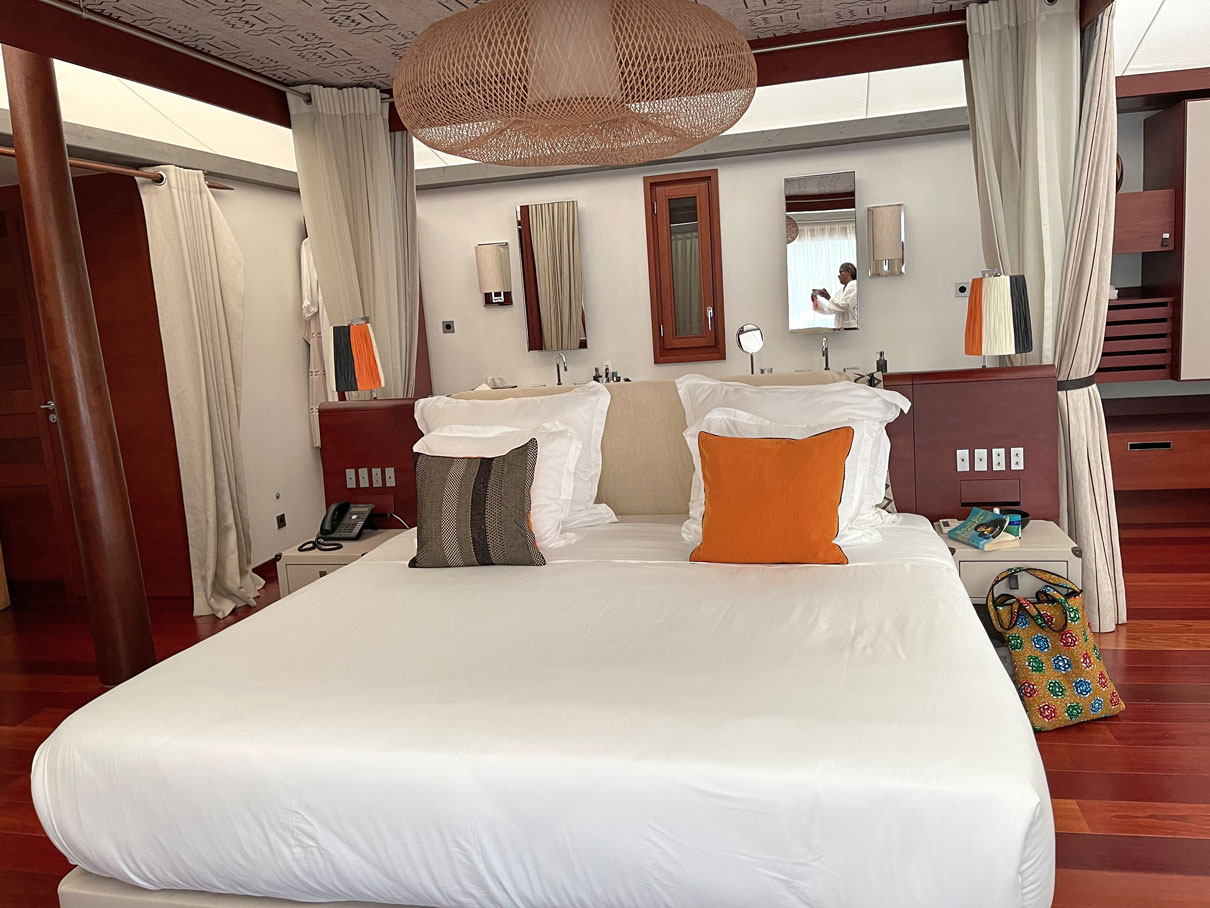CONSIDER THIS BEFORE DECORATING/DESIGNING A BEDROOM
PLANNING
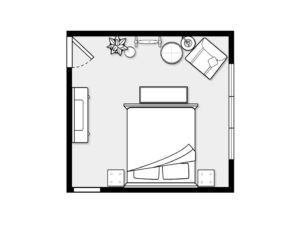
PLAN THE BEST BEDROOM LAYOUT
Deciding on the layout of your bedroom furniture is a vital step in bedroom design. You may have little flexibility,
but it’s worth drawing a layout on graph paper, paying attention to the direction natural light is coming from.
Start with the position of your bed, organizing all other furniture around it. It is best to position your bed
lengthways in a rectangular room, while larger bedrooms will allow for more creativity, and you may
well want to position the bed in the center of the room. When planning the layout for small bedrooms, consider
moving the bed into a corner to save floor space all round.
Now consider how much room (and budget) you have for bedroom storage. Fitted bedroom furniture tends
to be more expensive and formal-looking but will offer a more efficient use of space, especially in a
small bedroom, or an awkwardly-shaped one, such as a loft bedroom. Unfitted furniture needn’t match,
but you should aim, at the least, for a dressing table and bedside tables. And if you don’t have a separate
closet, you’ll need to add in something for clothes storage too.
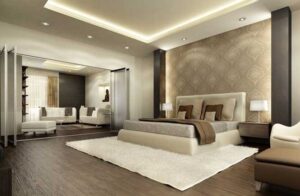
INVEST IN ARTIFICIAL LIGHTING TOO
While natural light is important when designing a bedroom, most of us will spend more time in our
bedroom when it is dark, so maximizing the potential of artificial bedroom light with a clever
bedroom lighting scheme is crucial to creating a cozy and relaxing space.
Think soft, diffused light from dimmable bedside lamps or wall lights, or even a string of fairy
lights arranged along your headboard. You may find that a ceiling light is unnecessary if you have integrated
lighting in a wardrobe and good task lighting around your dressing table, for example, but in a high-ceilinged
room, a chandelier or over-sized lampshade will create a focal decorative point.
FURNISHING

(Source: Anonymous)
INVEST IN PRACTICAL BEDROOM FURNITURE
The first consideration in choosing bedroom furniture is whether to go for fitted units or freestanding units. The choice
will partly be dictated by the shape of your bedroom: awkwardly shaped rooms (often the case in period properties)
will benefit from a bespoke fitted solution. More standardized spaces in newer properties will work best with well-chosen
furniture sets or an eclectic mix of bedside tables, bedroom storage units, and a freestanding wardrobe.
Freestanding options can be considerably cheaper than fitted units, and can be replaced every few years if you like
to switch up your bedroom design. If you only have to follow one rule when choosing your bedroom furniture, pick pieces
that double up as bedroom storage. Choosing items that have delicate or light-colored frames will avoid overloading
the space visually, and should make the bedroom feel larger, less formal and brighter, too.
If you are designing a bedroom that’s tight on space, a mirrored wardrobe is probably the best trick for visually enhancing
the size of the room.
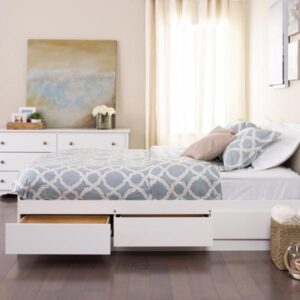
(Source: Forbes)
BRING IN SMALL STORAGE PIECES
Bedroom storage options should be easy on the eye as well as functional. Consider mixing and matching your bedroom storage,
especially if you have a lot of stuff that needs sorting and tidying – and sufficient space for a variety of storage units.
You can also choose a bedroom storage set, too, matching your bedside cabinets to your wardrobe and bed frame, and
adding a bedroom storage bench or bedroom storage chest for maximum storage options.
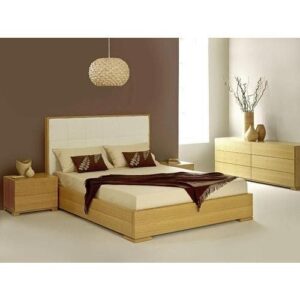
(Source: Anonymous)
CHOOSE THE BEST BED FOR YOUR BEDROOM DESIGN
Choosing a bed isn’t just about buying a good-looking bed frame. Rather, pick a bed frame that best suits your needs.
For example, are you short on bedroom storage and would benefit from a divan with built-in drawers, or a
bed that lifts up to reveal hidden storage in the base, or a bed with a storage headboard? Do you really need
a king-sized bed frame, or could you save space with double bed instead?
What about the bed’s style? It should complement your overall scheme but can be used to dictate it, too.
For example, if your preference is for a streamlined, minimalist look with a Scandi edge, go for a simple,
white-washed wooden frame; if you want to add a feeling of luxury or an injection of pattern or color, a bed
with an upholstered, padded headboard will be perfect.
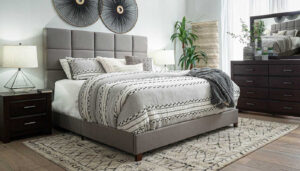
(Source homezone furniture)
PICK THE BEST BEDDING TOO
‘Never underestimate the incredible difference the right mattress, pillow, super light duvet and super comfy topper
will make. It can transform how comfortable we feel, eradicate neck and back pain, alleviate allergies, improve how well
we sleep and as a result, how well we feel. It’s also widely recognized that if you sleep on a pillow every night it should
also
be changed every 2-3 years.’ says Chrissie Rucker founder of The White Company.
Crisp, good quality bed linen is key too. Make sure that your bedlinen lasts, choose a high thread count (at least 300)
if your preference is cotton, and linen bedding that fully discloses its manufacturing source. Linen is also great if you
have
no time, or don’t want to iron your bed linen, as it has a naturally distressed look.
DÉCOR
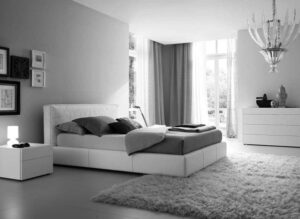
(Source: Anonymous)
DON’T FORGET BEDROOM FLOORING
Choosing bedroom flooring is all about maximizing comfort and warmth. Unsurprisingly, carpet is the most popular flooring
option for most bedroom designs, but solid wood flooring is another great option, as it can still be warm underfoot, especially
if you add a rug.
Solid wood is an expensive option, however, so consider an engineered wood flooring instead, which will be durable
and virtually indistinguishable from solid wood, although slightly more affordable in most cases. If you are on a tight
budget, consider laminate flooring or vinyl flooring, with higher quality options replicating the appearance of wood quite
convincingly, or paint pine floorboards.
And if you aren’t totally redesigning your bedroom but want to give your floor a refresh, a new rug can go a long way.
In any bedroom design, large or small, a few finishing touches can make all the difference. How to choose accessories
for the bedroom entirely depends on your tastes and budget: invest in a quality rug and see your bedroom instantly look
more elegant; layer cushions and throws to up the comfort factor; create a gallery wall to add interest and color; display
photos and pictures to personalize the bedroom; and use house plants to promote a healthy atmosphere.
Style your accessories to create an attractive color scheme and a variety of textures. Sheepskin, cotton, and satin do wonder
for softening up the look and feel of the space.
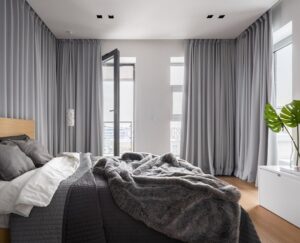
(Source: styles at life)
GET YOUR DRAPES RIGHT
You want to maximize the natural light coming into your bedroom during the day so it feels bigger
and brighter. But then of course at night you want the room to be as dark as possible – it’s a tricky balance.
Shutters are a great option as you can adjust how much light comes into the room, however, they can be
expensive, so our top choice for a bedroom is a light, floaty curtain, combined with a black-out blind.
You want to think about curtain length too, for a more luxurious look we’d recommend going full length,
and hang them slightly higher than the window. ‘Gone are the days of shorter curtains, they feel dated and
can make a window feel small and boxed in. Instead opt for floor to ceiling curtains, ensuring there are no gaps.
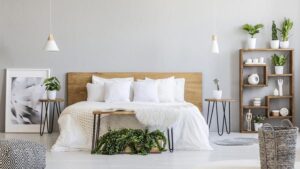
(Source: Forbes)
MAKE YOUR SPACE YOUR OWN WITH PERSONAL DECOR
In any bedroom design, large or small, a few finishing touches can make all the difference. How to choose accessories
for the bedroom entirely depends on your tastes and budget: invest in a quality rug and see your bedroom instantly look more
elegant; layer cushions and throws to up the comfort factor; create a gallery wall to add interest and color; display photos and
pictures to personalize the bedroom; and use house plants to promote a healthy atmosphere.
Style your accessories to create an attractive color scheme and a variety of textures. Sheepskin, cotton, and satin do wonder for
softening up the look and feel of the space.
(Text Source: Real Homes)

